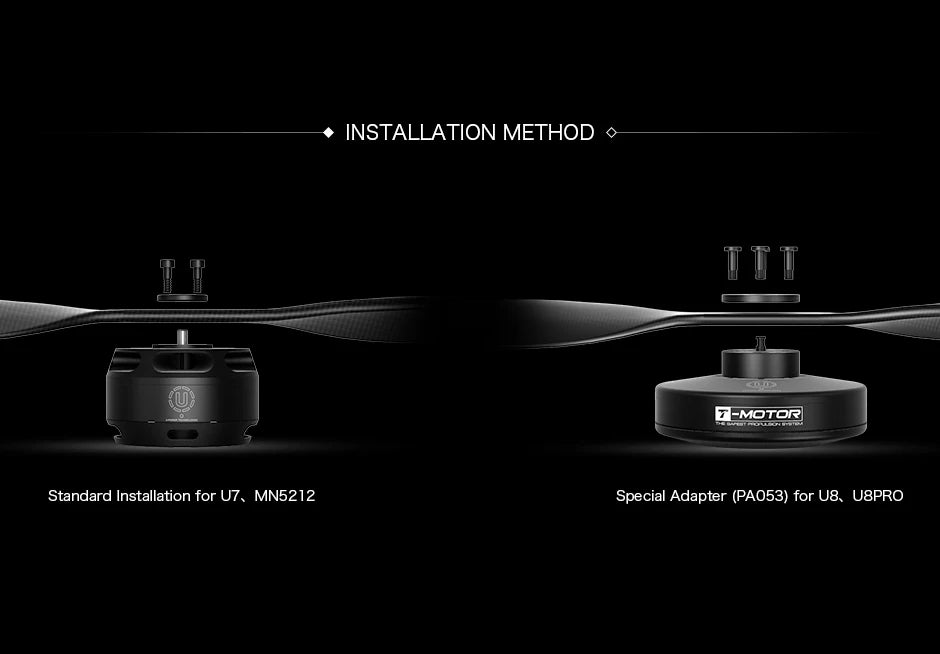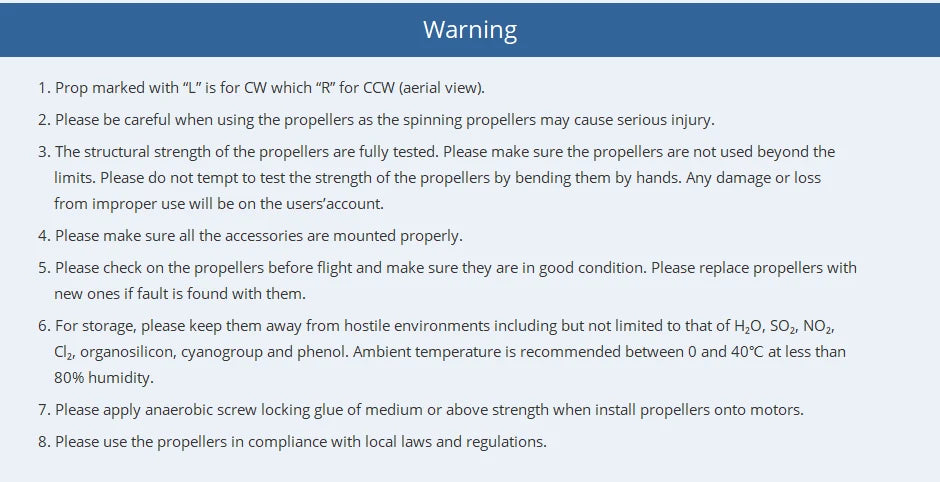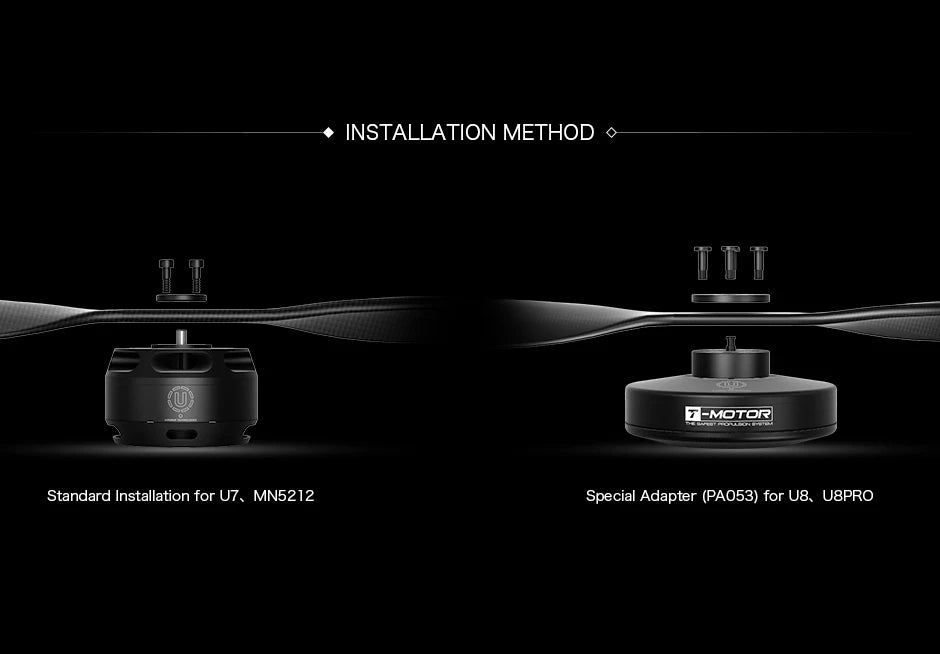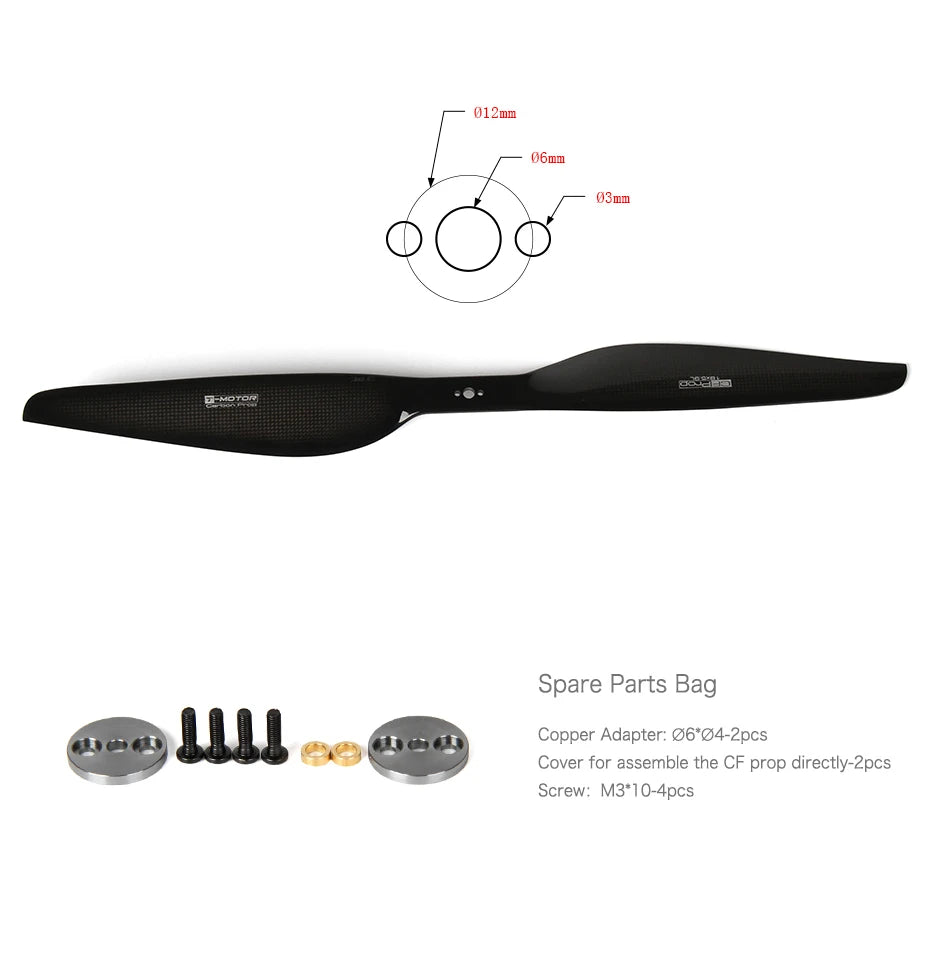T-MOTOR G20X6.5 G22X7.2 Prop SPECIFICATIONS
Brand Name: T-MOTOR
Origin: Mainland China
Material: Carbon Fiber
Recommend Age: 14+y
RC Parts & Accs: Propellers
For Vehicle Type: Airplanes
Use: Vehicles & Remote Control Toys
Quantity: 2
![T-MOTOR G20X6.5 G22X7.2 Prop, 0l2mn O6mm 03m 2356P] TOn Spare](https://rcdrone.top/cdn/shop/files/Seb68ad146d8245bebac924199f44bfcf7_d5e64e2b-860b-4908-beb2-a37a5fe55dd3.webp?v=1715449667)
0l2mn O6mm 03m 2356P] TOn Spare Parts Mc W Jocre Copper Adapter: 06*04-2pcs Cover for assemble the CF prop directly-Zpc's Screw: M3*10-4pc eeC

Standard Installation Method for T-MOTOR G20X6.5 and G22X7.2 Propellers: Use PA053 Special Adapter with U8 UB, following TT E-MOTOD guidelines.

T-MOTOR Series Z-blades feature a single blade made from carbon fiber and epoxy, weighing 44g. The thrust limitation is 10kg, and it operates within an ambient temperature range of -40°F to 658°C (optimal RPM: 2900-5200 RPM). Storage conditions should be between -10°F to 508°C/85% humidity, with a surface treatment applied for a glossy finish.

The structural integrity of these propellers has been thoroughly tested to ensure their robustness and durability. However, any damage or loss resulting from improper use or misuse will be the sole responsibility of the user.

Standard Installation for T-MOTOR G20X6.5 and G22X7.2 Propellers, requiring special adapter PA053 for U8 and U-B Pro.

Spare parts bag includes: copper adapter, 2 pieces; cover for assembling the carbon fiber propeller directly (06mm * 04), and screws (M3 * 10, 4 pieces).

The T-MOTOR G20X6.5 or G22X7.2 propeller features integrated weight, made from carbon fiber and epoxy material, with a single blade weighing 56g. The thrust limitation is 11.5kg, and it operates within an ambient temperature range of -40°F to 65°C (-40°C to 200°F). The optimum RPM range is between 2850-4800 RPM per minute. Storage requirements include a temperature range of -10°F to 50°C (14°F to 122°F) and humidity level of 85%, with a surface treatment that provides a glossy finish.

The structural integrity of these propellers has been thoroughly tested. For storage purposes, please keep them away from hostile environments, including high humidity (H2O), sulfur dioxide (SO2), nitrogen oxides (NOx), chlorine gas (Cl2), organosilicon compounds, cyanogen group compounds, and phenols.
Related Collections







Explore More Drones & Accessories
-

Camera Drone
Our Camera Drone Collection features a wide range of brands including FIMI,...
-

Drone Accessories
Discover a wide range of drone accessories to enhance flight performance, extend...









